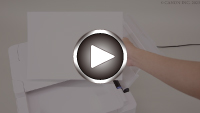Loading Photo Paper / Plain Paper in Rear Tray
You can load photo paper or plain paper.
You can also load envelopes on the rear tray.
-
Prepare paper.
Align the edges of paper. If paper is curled, flatten it.

 Note
Note-
Align the edges of paper neatly before loading. Loading paper without aligning the edges may cause paper jams.
-
If paper is curled, hold the curled corners and gently bend them in the opposite direction until the paper becomes completely flat.
For more details on handling curled paper, see Check 3 in Paper Is Smudged/Printed Surface Is Scratched/Ink Blots/Paper Curl.
-
When using Photo Paper Plus Semi-gloss SG-201, even if the sheet is curled, load one sheet at a time as it is. If you roll up this paper to flatten, this may cause cracks on the surface of the paper and reduce the print quality.
-
-
Open the rear tray cover (A) and then pull up the paper support (B).
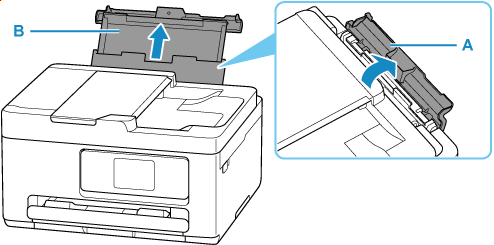
-
Slide right paper guide (C) to open both paper guides.

-
Load paper stack in portrait orientation WITH THE PRINT SIDE FACING UP.
After loading the paper, the paper setting confirmation screen for the rear tray appears on the touch screen.
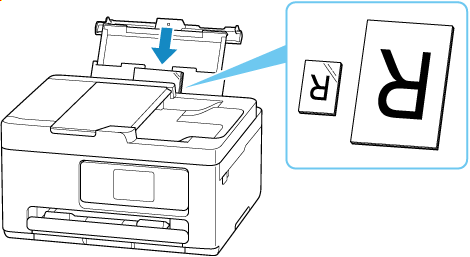
 Important
Important-
Always load paper in portrait orientation (D). Loading paper in landscape orientation (E) can cause paper jams.
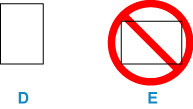
-
-
Move the right paper guide and adjust the guides to both edges of the paper stack.
Do not slide the paper guides too tightly against the paper. The paper may not be fed properly.

 Note
Note-
Do not load sheets of paper higher than the load limit mark (F).

-
-
If page size and media type on touch screen match size and type of paper loaded in rear tray, select Yes.
If not, select Change to change the settings in accordance with the size and type of the loaded paper.

 Note
Note-
See Check paper replacement when you want to hide the screen for confirming the setting of paper.
-
-
Pull out the paper output tray (G) and the output tray extension (H).
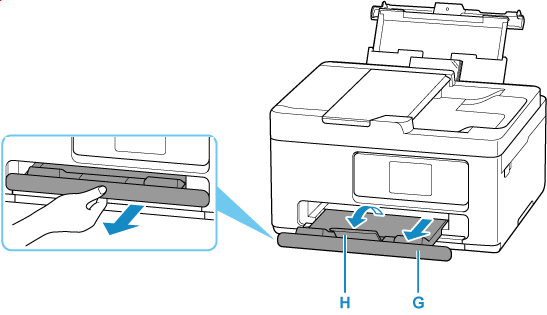
 Note
Note
-
There are various types of paper, such as paper with a special surface coating for printing photos at optimal quality and paper suitable for documents. Each media type has specific preset settings (how ink is used and sprayed, distance from nozzles, etc.), that allow you to print to that type with optimal image quality. The wrong paper settings may cause poor printout color quality or scratches on the printed surface. If you notice blurring or uneven colors, increase the print quality setting and try printing again.
-
To prevent incorrect printing, this printer has a function that detects whether the settings for the paper loaded on the rear tray matches the paper settings. Before printing, make print settings in accordance with the paper settings.
